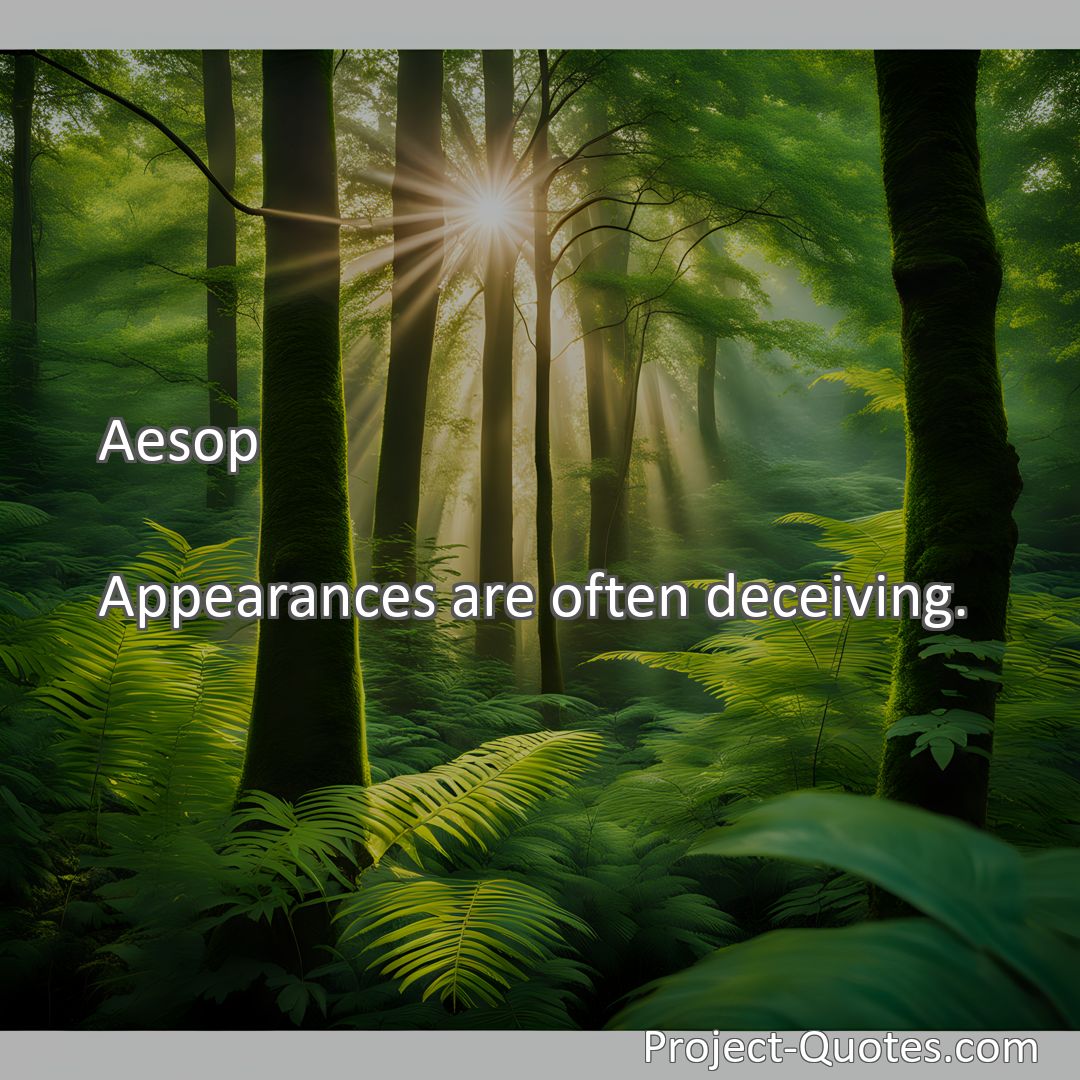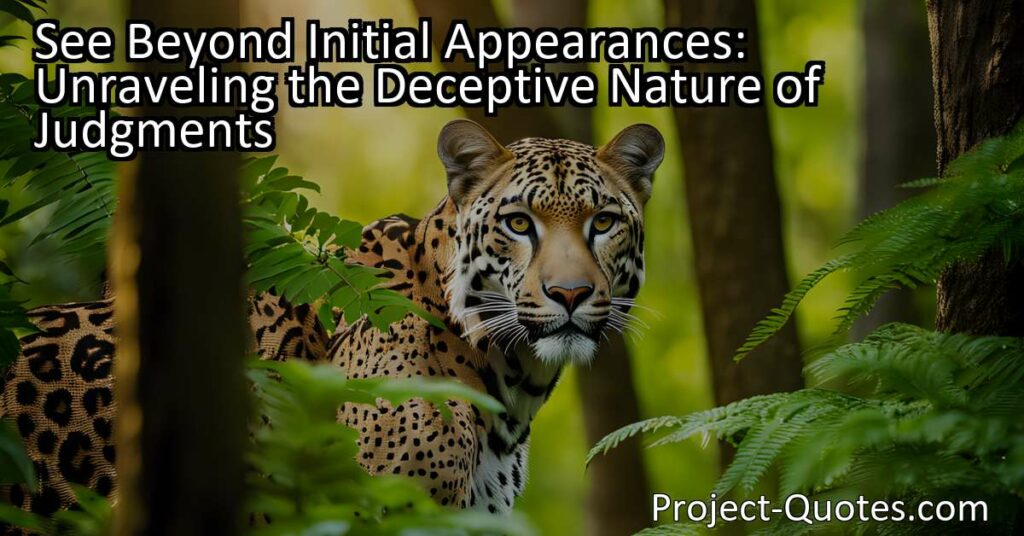Appearances are often deceiving.
Aesop
See Beyond Initial Appearances: Unraveling the Deceptive Nature of Judgments In a society that often relies on first impressions, it is important to see beyond initial appearances and not judge a book by its cover. By exploring examples from literature, history, and everyday life, we learn that appearances can be deceiving and can hinder personal growth and understanding. By cultivating the ability to look deeper and challenge our initial perceptions, we can foster a more inclusive and compassionate society where the true essence of individuals and situations shines through.
Table of Contents
Meaning of Quote – Appearances are often deceiving.
Appearances: The Art of Deceiving or Perceiving?
Introduction:
Appearances are often deceiving. This wise observation by the renowned author Aesop captures the essence of a fascinating aspect of human perception. As social beings, we live in a world that often relies on first impressions. We form opinions and make decisions based on what we see and experience. However, when we dig deeper and look beyond the surface, appearances can be misleading. In this article, we will explore the rich meaning behind Aesop’s quote, examining various examples from literature, history, and everyday life to understand the importance of not judging a book by its cover.
The Misleading Facade:
Throughout history, countless instances have highlighted the deceptive nature of appearances. One such example lies in Aesop’s own fables. In “The Fox and the Grapes,” a famished fox covets a bunch of grapes hanging high on a vine. Unable to reach them, the fox convinces itself that the grapes are sour, dismissing their desirability. This classic tale reminds us that what we perceive initially may not always reflect the truth.
Similarly, in Nathaniel Hawthorne’s enduring novel, “The Scarlet Letter,” Hester Prynne’s public shame is symbolized by the embroidered scarlet letter ‘A’ she is forced to wear. While the letter ostensibly represents her sin, it also serves as a reminder that appearances can mask a person’s true character. Hester’s actions throughout the novel, her profound strength, and her enduring love challenge society’s superficial judgments.
Historical Blunders:
History is replete with examples where the initial assessment of a situation based on appearances led to significant misjudgments. One such incident dates back to the late 1800s when an amateur paleontologist discovered a set of fossilized bones in South Dakota. Unfamiliar with the remains, he misidentified them and labeled them as a new species of dinosaur. It wasn’t until later, when renowned paleontologist Othniel C. Marsh uncovered the truth, that it became apparent that the bones belonged to a previously unknown dinosaur, the Brontosaurus.
This historic case highlights the danger of hastily forming opinions based on limited knowledge. The misidentification based on appearances alone was only corrected when further exploration and analysis were undertaken. It serves as a reminder that appearances alone do not provide the full picture.
Judging Others:
In everyday life, appearances can lead us to direct false judgments towards others. Preconceived notions and stereotypes breed misunderstanding and discrimination. Whether it is racial, ethnical, or religious beliefs, people are often quick to judge others based on outward appearances. This can lead to individuals being unfairly dismissed or misunderstood, inhibiting the formation of meaningful connections and subsequent personal growth.
To further illustrate this point, Mark Twain’s beloved classic, “The Adventures of Huckleberry Finn,” portrays a teenage boy named Huck who embarks on a journey along the Mississippi River. Along the way, he encounters a runaway slave named Jim. Twain masterfully challenges the prevailing beliefs of his time by emphasizing Jim’s kindness, intelligence, and moral character. Huck’s realization that appearances can deceive becomes a pivotal moment in the novel as he questions and ultimately rejects the societal prejudices taught to him.
A Lesson in Wisdom:
As we reflect on the words of Aesop, it becomes evident that appearances are not a reliable measure of truth or worth. It is essential to look beyond the surface, to delve deeper, and to seek a more comprehensive understanding.
Cultivating the ability to see beyond initial appearances allows us to appreciate the diversity in others, to challenge stereotypes, and to make more informed judgments. By embracing this wisdom, we can foster a more inclusive and compassionate society.
Conclusion:
Appearances are often deceiving, as attested by Aesop’s timeless quote. By exploring literature, history, and everyday examples, we have observed the consequences of making judgments based solely on appearances. Preconceived notions and snap judgments can hinder personal growth, perpetuate discrimination, and overlook the true essence of individuals and situations. It is only through deeper understanding, empathy, and a willingness to challenge our initial perceptions that we can overcome the deceptive nature of appearances. Let us heed Aesop’s wisdom, allowing it to guide us towards a world where the beauty within shines brighter than the veneer presented to the world.
I hope this quote inspired image brings you hope and peace. Share it with someone who needs it today!


